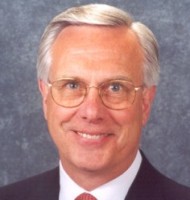As a follow-up to the article on how to write a good mission statement, highlighted below are critiques of a few mission statements, including some familiar ones.
Example: We provide pick-up and on time delivery of important documents worldwide.
Verdict: Very good. The service is one of delivery to a worldwide market. But the mission statement does not cover all customer shipments, only small packages on an urgent basis. “On time” talks to the issue of reliability. While the specific of “how” isn’t discussed, it is implied that an efficient ground and air distribution network is in place and is operated on a continuous basis.
Example: We provide systems engineering services to the defense department and military contractors.
Verdict: Not so good. Systems engineering is a vague definition that omits any discussion of specific key deliverables, benefits to the customer, or differentiation from competitors who make the same claim. While initially the focus sounds direct, it lacks focus and implies a broad range of services, which in turn degrades the credibility. Few small companies are experts in meeting all of the needs associated with the defense industry. An improved mission statement would ditch the words “system engineering services” and replace them with something more specific such as “logistics,” “satellite imaging,” or “simulation modeling.” The reworked mission statement would also more clearly define the customer, which might be the Air Force or more specifically the Ballistic Missile Defense Organization.
Example: We provide unique application engineering, communications, and systems integration services to federal civilian agencies, departments of the armed forces, and commercial customers with needs in aviation command and control, avionics, and guidance systems.
Verdict: Pretty good. When “unique” is not defined, it leaves room to question credibility and begs for specifics. A very direct focus at both customer and product or service offering, albeit at a broad level, is needed. It would be better if more limited (i.e. to guidance and communications) offerings were mentioned in this boundless high-tech collection of capabilities.
The glaring omission here is the statement of why or how a provider can provide services to both the federal and commercial markets; the market needs and the approach to market and contracting are dramatically different. Small companies should address their niche and state why their product or service meets the needs of such a diverse customer set. When you can, the representatives of business will call you; if you can’t, the phone just doesn’t ring.
Example: At Dean Witter, we measure success one investor at a time.
Verdict: Very good. Implied that the firm was successful and growing, which gave credibility and encouraged investors to come to them. They valued success for their customers. “One investor at a time” strongly stated a focus on customer needs and a dedication to servicing them.
Example: Working hand-in-hand with the communications industry, we deliver low-cost microelectronics solutions today for the wireless products of tomorrow.
Verdict: Interesting. How can you work with an industry? You work with companies and people that are a part of the industry makeup.
Also, microelectronics today has limitations. How are you overcoming these, and what will it do for products? If you define a profound change that will be prevalent tomorrow, you will give yourself more credibility.
Hand-in-hand implies closeness, but what is the customer requirement you are satisfying? Perhaps the company is a state-of-the-art developer of products, but that leads to confusion because “state-of-the-art” implies leading edge, which rarely means “low cost.”





